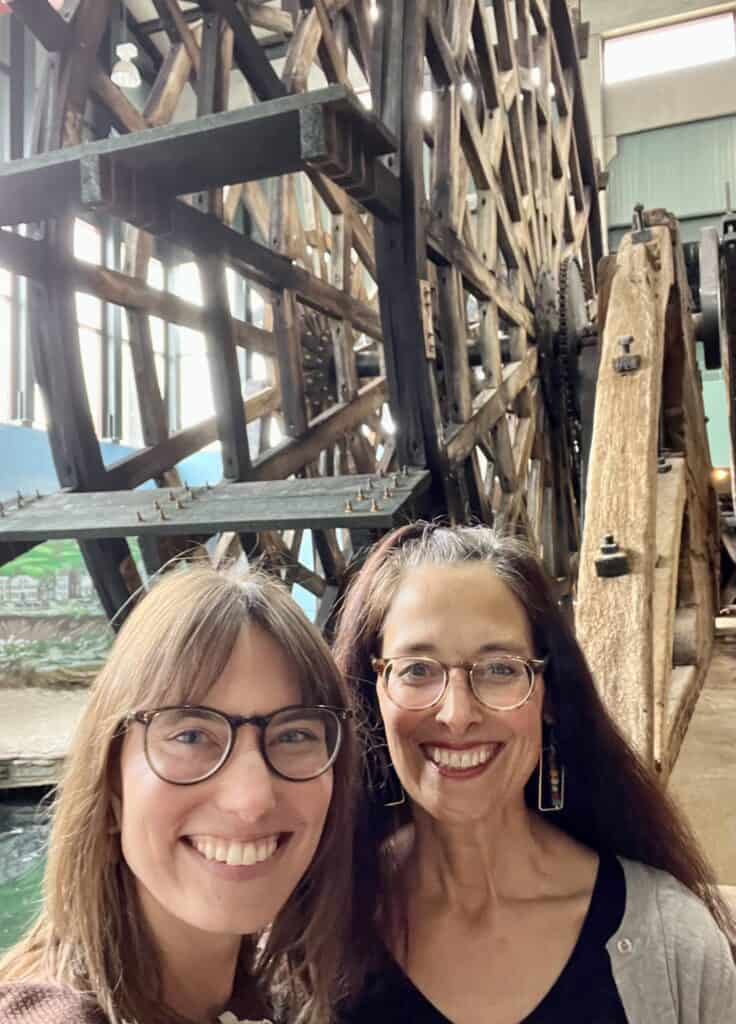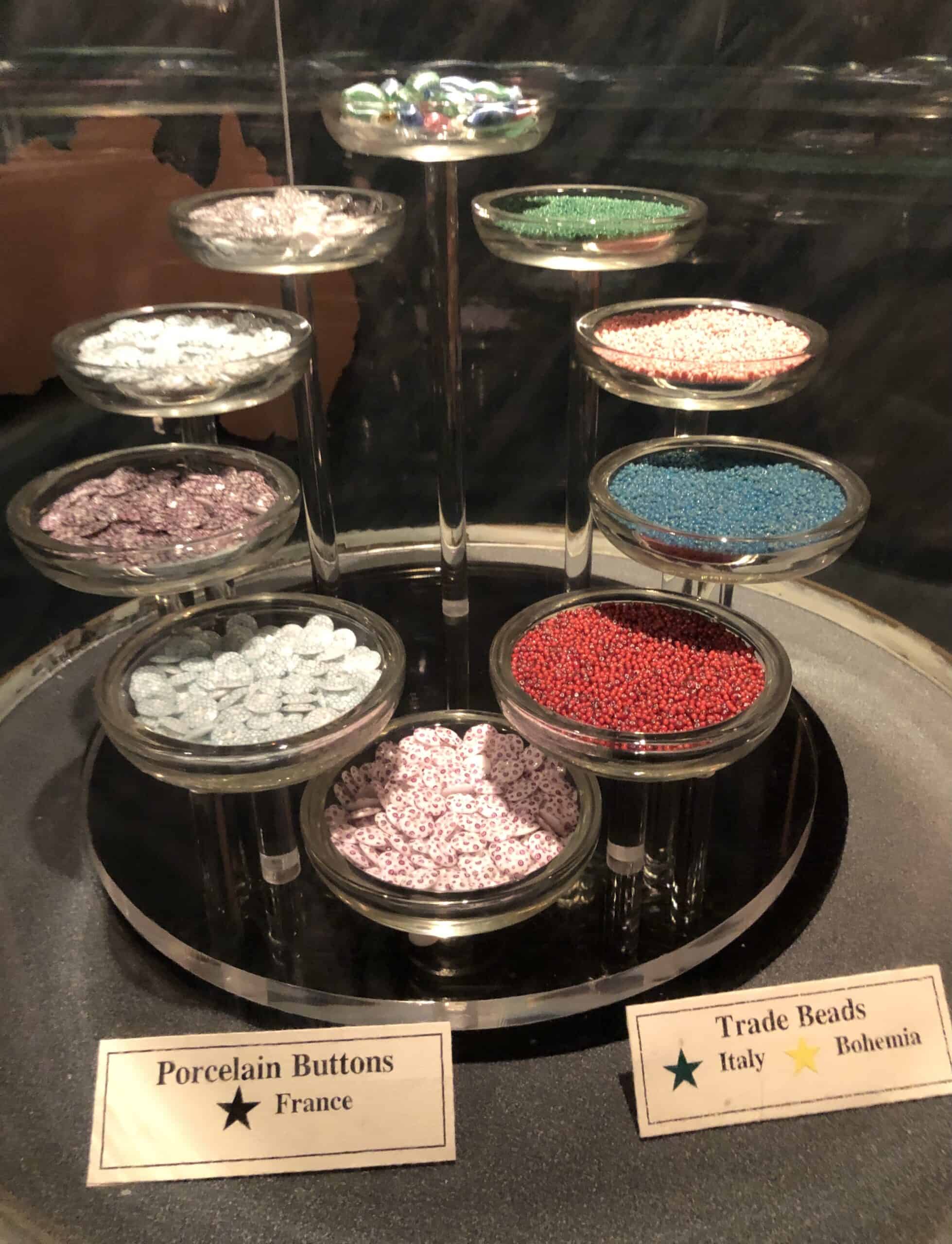Years ago, my niece told me I should go to the Arabia Steamboat Museum in Kansas City. I didn’t go right away, as it didn’t seem of interest to me. I am not much of a boat person. But when I finally did go, I was so utterly astounded, it became my most favorite museum…..on earth. Anytime anyone comes to visit me, I take them there first. And so, when my daughter came to visit, we went straight away! As we entered the museum, we followed a path that caused us to stop and watch four videos along the way. Each portrays the development of this truly remarkable story. It is one of the best stories I have ever heard. Move over, Indiana Jones. The gist of it is — in 1985, two families were sitting around the dining table chatting. One family, the Hawleys, owned an air conditioning company, and the other, the Mackeys, owned a hamburger restaurant. Young Dave Hawley, happens to mention that while he was repairing an a/c that day, the customer commented on all the sunken ships in the Missouri River, and the treasures they held. As if it is a normal part of every casual conversation, the two families decide to go find one and dig it up! So, they make assignments: one person will go pull plat maps of the river to assess how it may have shifted during the past 200 years, one will go read old newpaper accounts about the sinkings, one will determine the mechanical equipment needed, etc. And so……they do it! With a massive proton magnetometer metal detector, they find a ship in a farmer’s field. Can you imagine that discussion – asking a farmer if they can dig for a sunken ship in his field?!
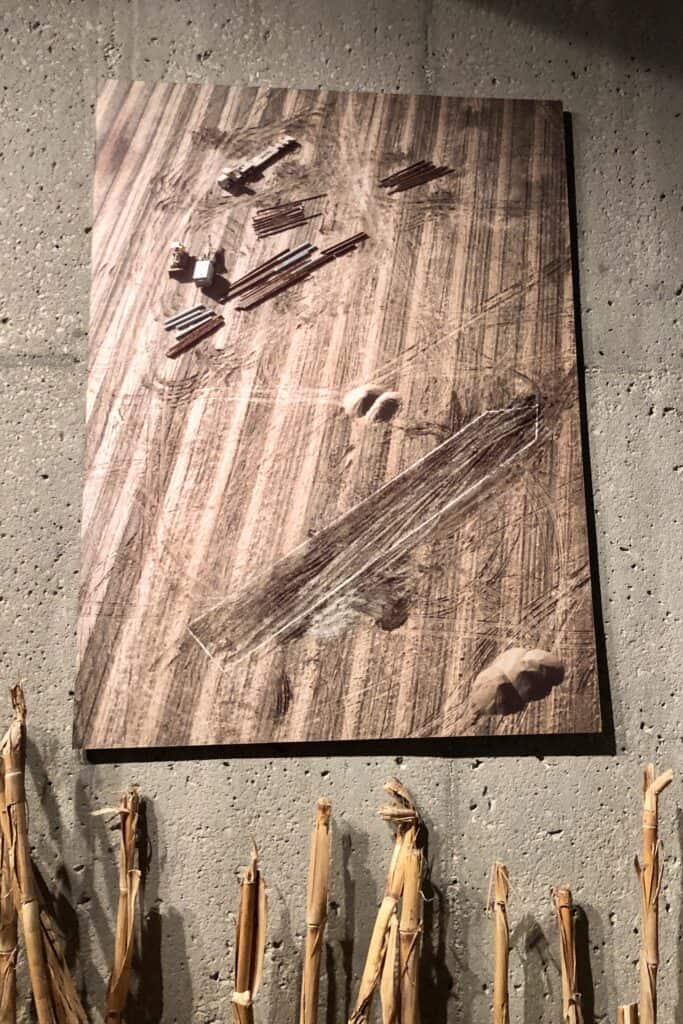
See how they were able to outline the steamboat perfectly?! And so the dig began. The pictures are incredible in and of themselves, but you really need to see the videos in person. They fill in so much more of the story.
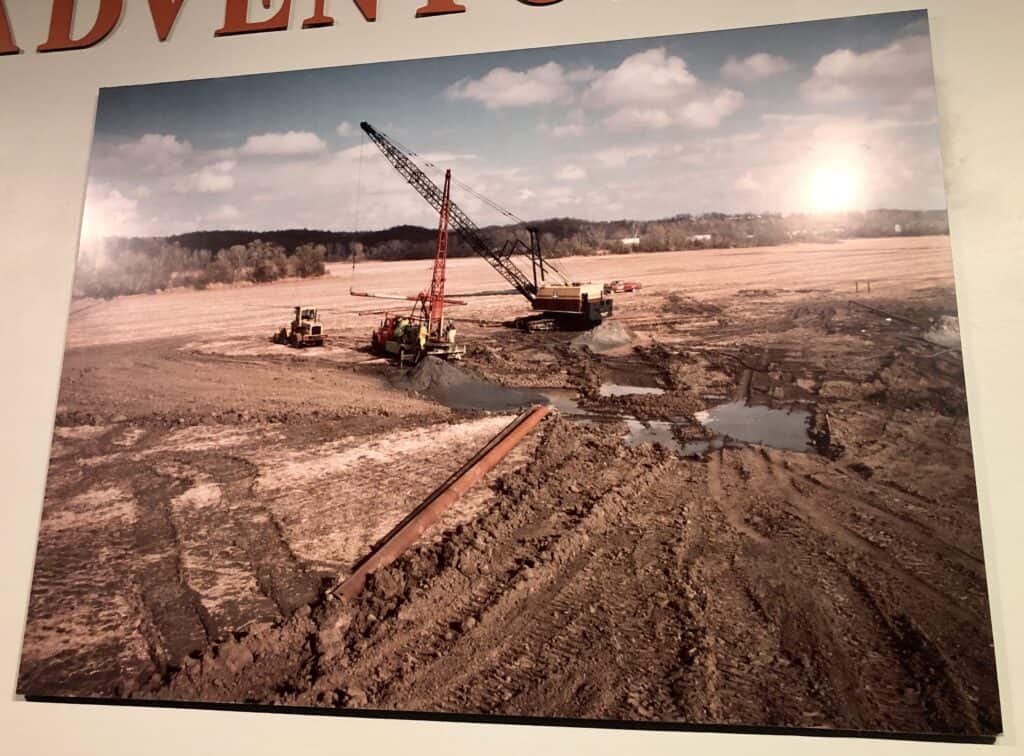
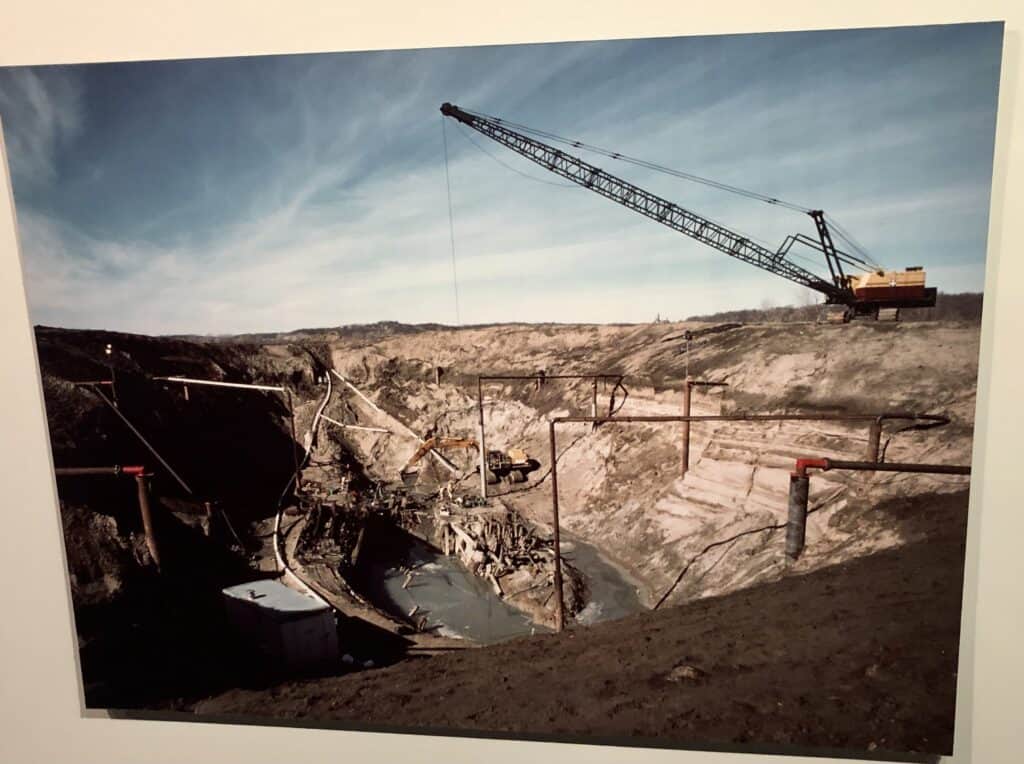
The Arabia held 200 tons of freight and was only three years old when it sank in 1856. It hit a protruding tree stump. Do you notice the enormous pipes in the above-photo? The ship was surrounded by an aquifer (ground water), and so pumps and generators were need to continuously pump out the water as they dug. It took them three years from hearing about the sunken ships to standing on the deck of the Arabia. As you enter the display rooms, you will often find founding family members available to talk with. I was elated when my daughter and I ran into Jerry Mackey, the one who owned the restaurant (HiBoy).
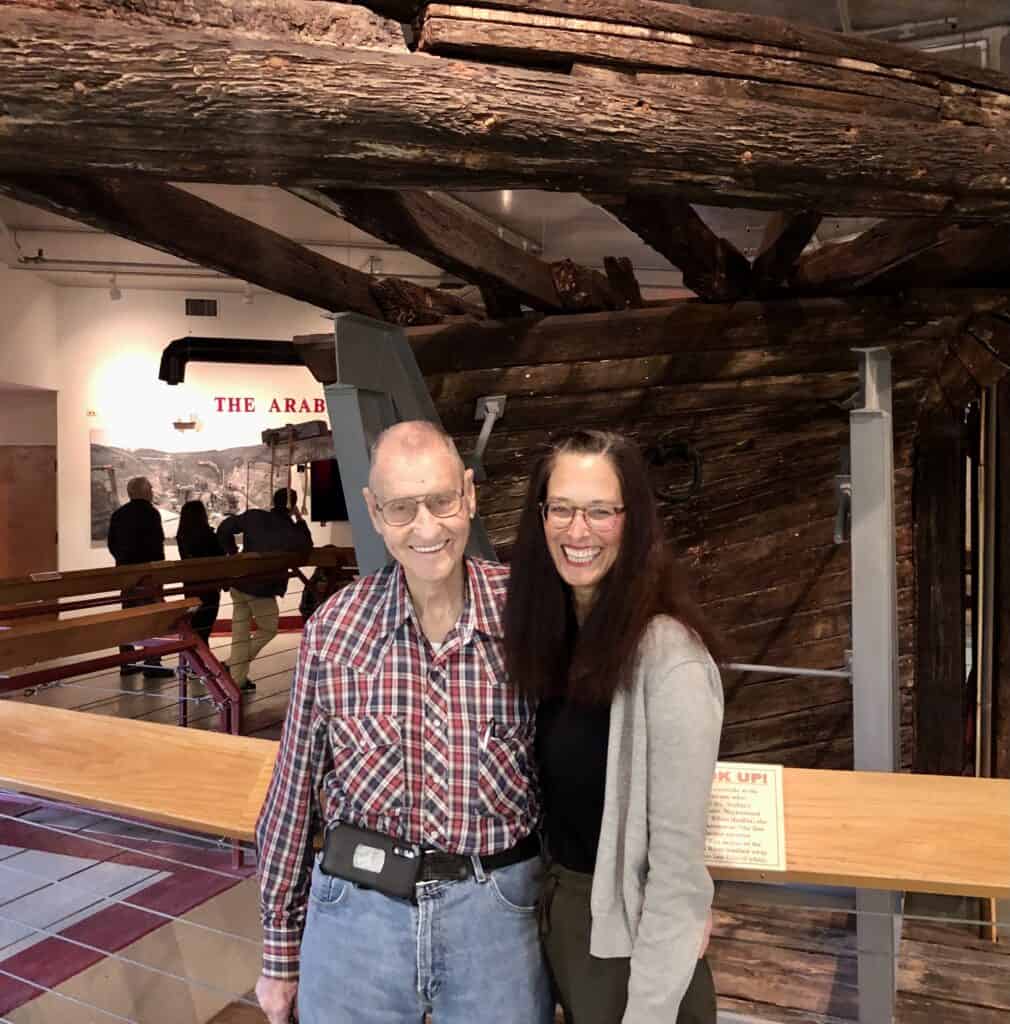
He has fabulous personal details to add that are not included in the museum. He also quoted a full poem for us about the true story of a minuscule doll they collected off the Arabia. It is titled “Frozen Charlotte“.
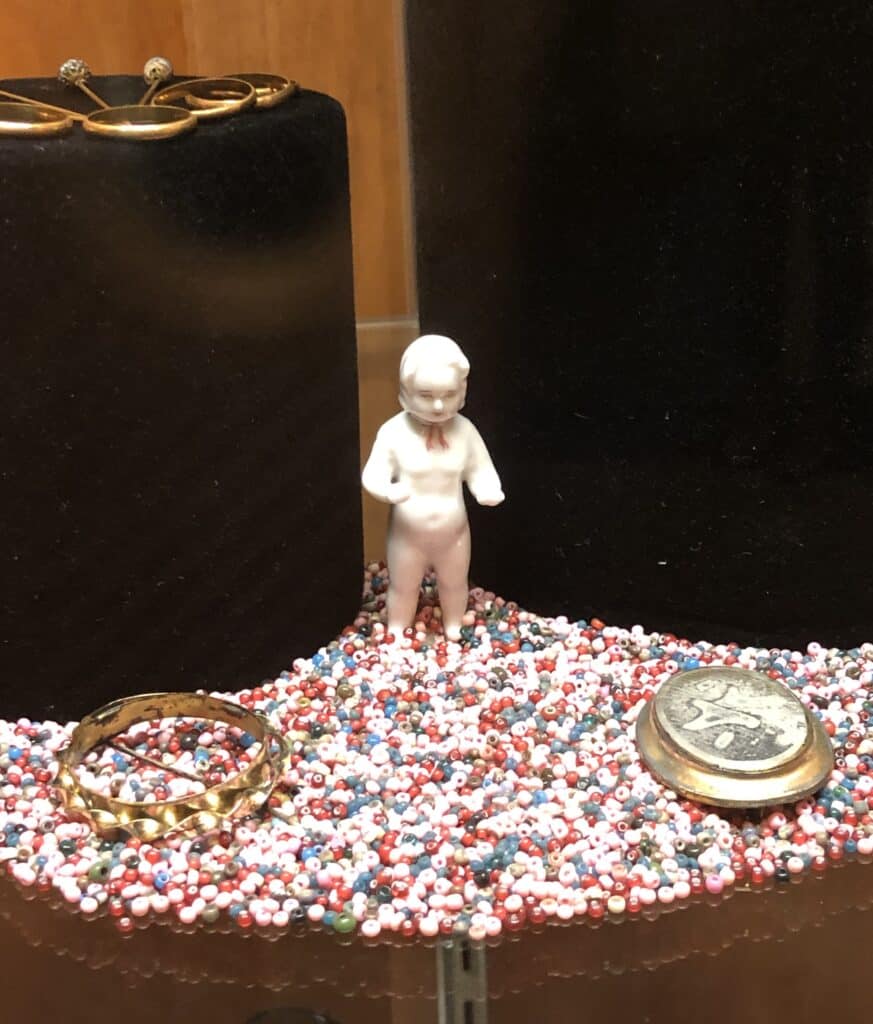
The display rooms are full of items preserved in time from 1856. Even the food. When bottles were unearthed, Jerry had to taste each specimen. As a restauranteur, he had to know what food from before the Civil War tasted like. Shockingly, none of it made him sick. There is a full video about it on their You Tube Channel. My favorite items are the buttons (seemingly billions of them) and the fine china. Now remember, once the items were brought up, each one had to be washed of entrenched mud. I think I would have been having nightmares about mud every night. I still can’t get over how unscathed the delicate plates and glasses were. How did they survive that rushing current and 45 feet of packed mud? However, there is a small display case containing some of the pieces that did break under such extreme pressure.
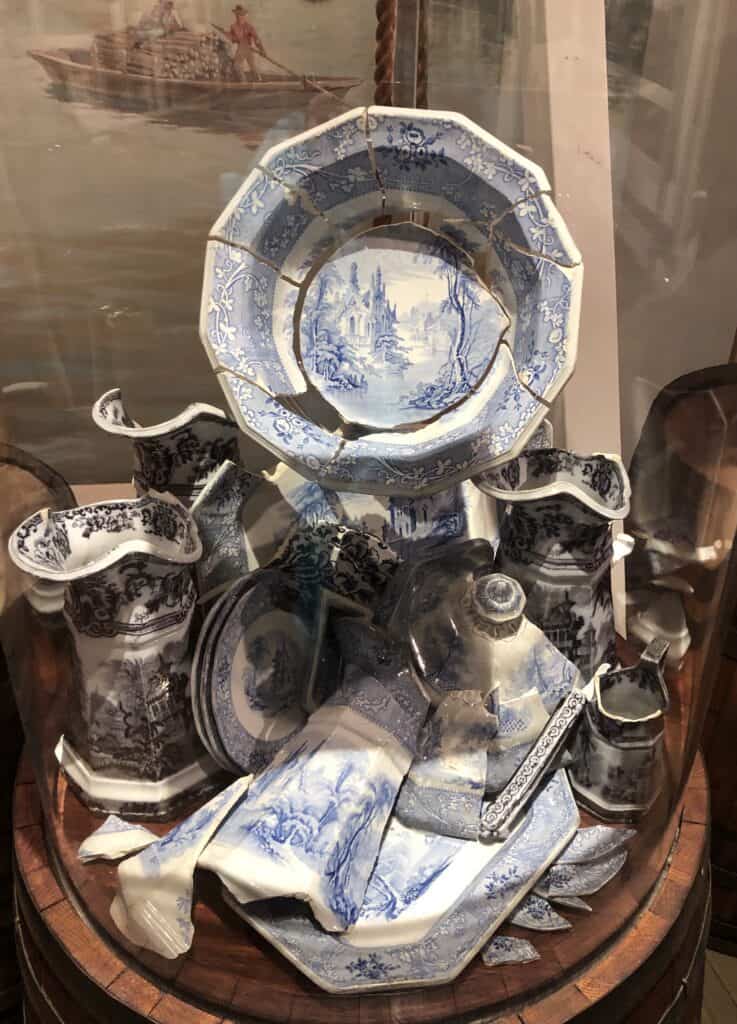
It was a treat to run into Dave Hawley on the floor. As one of the original founders, he is always fascinating to talk with. Dave’s son, Matt, creates the videos for the museum as well as their YouTube channel. It is always a thrill for me to be in the presence of these types of people. They have something beyond the rest of us. I call it “the magic”. I could never have done what they have. Never. Very few people could. They had no background in treasure hunting. They constructed the museum displays themselves, with their own hands. They learned archeology and have a lab onsite where they are still cleaning items found on the ship 35 years ago. That is admirably meticulous. Even the Smithsonian has requested their artifacts. Dave told us that he has found twelve more sunken ships. He is currently working on preparing to raise the Malta. He said that 400 steamboats sank in the river. The most moving display contains the photo of the ending of the dig, and the team allowing the ground water to rebury the skeleton of the Arabia.
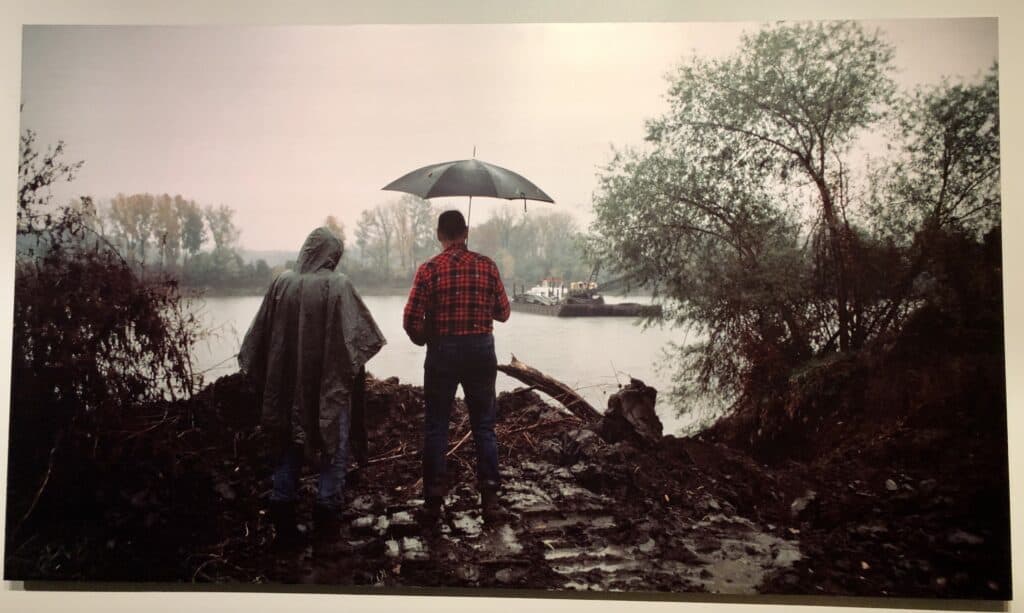
The entire recovery process had taken 4 months. The last visual of the boat must’ve been poignant as it was once again lost to sight. My daughter and I had such an enjoyable time together. When you leave a museum with your mind stimulated with imagination, and your heart filled with stirring reflection, then you have been to a most unique place.
